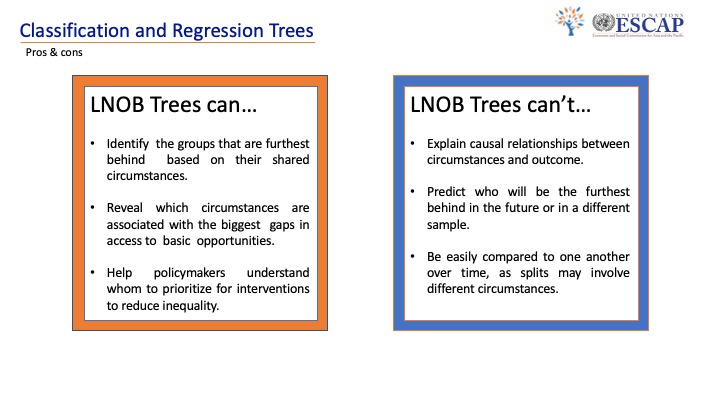Pros and cons of LNOB Trees

As much as we love our LNOB trees, it is also important to note what it can and cannot do. To start off with, our LNOB trees do not explain causal relationships between our circumstances and a certain outcome. We cannot say for sure that the circumstances our trees split the data with do in fact cause a lack of access. Additional causality analysis is required. Our models are not predictive, therefore they are just a way of looking at data as it is and cannot predict what may happen in the future. They are not easily comparable overtime as the splits of our circumstances may also change overtime which means that we could be looking at a different group in 2019 than we are in 2015.
However, we can identify groups of people who share circumstances to create a disadvantage of access, which is a great stepping stone for further investigation and causality analysis. Our LNOB trees also reveal which circumstances are associated with the biggest gaps in access to basic opportunities. And lastly, they can help policymakers understand who we need to prioritize when making interventions to reduce inequality across key services and opportunities.

